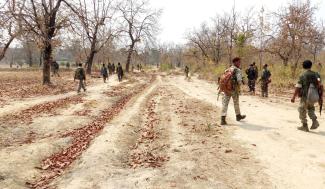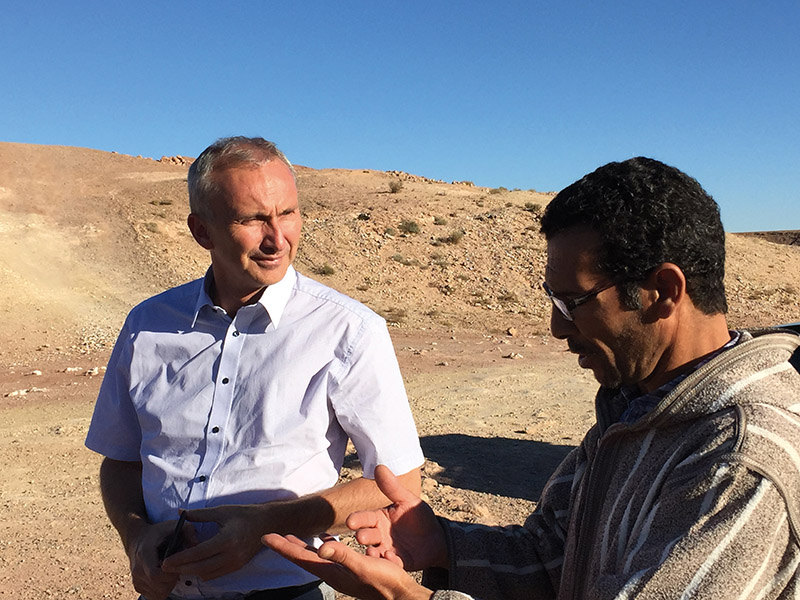Governance
How central Indian forests become sites of conflict

India’s indigenous communities are collectively referred to as “Adivasis” and officially enjoy special protection as “scheduled tribes” (see box). To a large extent, they remain marginalised nonetheless. Many villages do not have much contact to the outside world. The villagers live according to customary laws that have evolved over centuries. They allow Adivasi communities to make use of natural resources whilst also serving as stewards of the forests.
The Forest Rights Act of 2006 acknowledged the symbiotic relationship between Adivasis and their natural habitat. It explicitly gives village assemblies a role in managing the forests and empowers them to safeguard their culture.
India’s Supreme Court has interpreted these rights in a quite expansive way. In a landmark case, it banned further mining of bauxite in the Niyamgiri hills. Vedanta Aluminium wanted to exploit the resource, but the court decided in favour of the Dongria Kondh, an Adivasi community, in whose eyes the hills are a religious site.
Mining, resource exploitation and economic growth
Unfortunately, things are not often resolved this way. There is a huge gap between what the government perceives as development and how indigenous communities live (for the example of the Andaman islands, see Anup Dutta on www.dandc.eu). The government is keen on mining, resource exploitation and economic growth. It tends to side with corporate interests. For several reasons, laws meant to protect the Adivasis are often not enforced and even blatantly violated:
- The legal situation is bewilderingly confusing, as national and state-level legislation are often inconsistent.
- The Adivasis speak languages of their own, but the laws are written in English and Hindi. Both feel alien to them, and may actually be incomprehensible. Moreover, the Adviasis typically lack access to lawyers. Moreover, it can be very difficult to go out to court for cultural reasons.
- Officers of state agencies typically do not understand any Adivasi language.
- Across India, the implementation of laws tends to be incomplete, not least because formal legislation often does not fit grassroots realities. Hierarchies of wealth and caste often supersede the rule of law.
- Indian state agencies have a reputation of corruption.
The situation is particularly tense in the Bastar district of Chhattisgarh state, where iron-ore mining and logging are going on. The Gond, Halba and other local Adivasi communities do not benefit from the resource exploitation.
They depend on the forest for medicinal herbs, burying their dead, religious rituals, grazing cattle, fetching fuels and collecting food. The forest cover has been continuously degraded, however. Neglect of local people’s customary forest rights is a primary reason. Bastar is one of India’s most backward regions. Relevant issues include low literacy rates, inadequate health care and poor infrastructure.
Growing tensions since liberalisation set in in 1990s
The government’s market-driven development paradigm means that demand for natural resources has been growing fast in the past three decades. Both the forest and mining sector are largely unregulated. Since the onset of liberalisation in the early 1990s, tensions have increased dramatically in forest areas like Bastar. Recurring grievances include displacement, lack of proper relocation and meagre compensation for land claimed by government institutions.
While the Forest Rights Act was definitively a step in the right direction, it was always at odds with some state-level regulations. Ordinary Adivaisis are unable to navigate the legal complexity.
In this scenario, left-wing extremists were able to build bases among the deprived. Some Adivasis – though certainly not all – joined them. Violent clashes have become common. Apart from the formal security forces, right-wing vigilante groups play a role too (see Nandini Sundar on www.dandc.eu).
Around the world, anti-insurgency strategies often prove incompatible with the rule of law. That is no different in central India. Wrongful convictions and allegations of involvement with extremist groups occur frequently. Indeed, activists who insist on principle enshrined in the constitution and national laws are often labelled “terrorists” and prosecuted accordingly.
Divisive education
In this setting, even outside interventions that look benign can actually be divisive. An example is the Kalinga Institute of Social Science (KISS), a large residential school for Adivasis in Odisha state. The school is cooperating with corporations like Adani, the mining conglomerate, and training youngsters to become skilled labourers in that sector.
This approach is not as noble as it might seem. Yes, it does provide an education to young people, but it also co-opts them and pits them against the interests of their communities. More generally speaking, educational institutions often make the young Adivasi generation give up their language, food habits and indigenous clothing.
For 30 years, Adivasis have been continuously displaced from their own land and forced to become contract labourers for the mining sector. One result is migration to other states, but it means considerable sacrifices. An Adivasi group’s special rights are often limited to the state where it has traditionally lived. In the diaspora, moreover, indigenous languages are likely to wither away fast and many cultural traditions cannot be maintained.
Each Adivasi group is unique. Each has its traditions and culture which date back centuries. The groups have constantly tried to preserve their lifestyles, adhering to their own norms and customs. Conflicts only begin when their land is found to be rich in natural resources which the government wants to see exploited for commercial purposes.
Peace must be restored. The big issue is whether the indigenous communities can keep living the way they do or whether they must assimilate. [SB3] [DH4] Mutual learning is important. For it to happen, the Adivasis’ constitutional and legal rights must be upheld. They must get their rightful say in what happens with their land. The assumption that modern Indian society is more civilised is misleading. Current consumerism is unsustainable, whereas Adivasi culture is not only compatible with ecological diversity and climate mitigation, but actually conducive to both.
Suparna Banerjee recently obtained her PhD in development studies from Bonn University. Her book on forest-related conflicts in central India will be published by Routledge soon.
mail.suparnabanerjee@gmail.com













